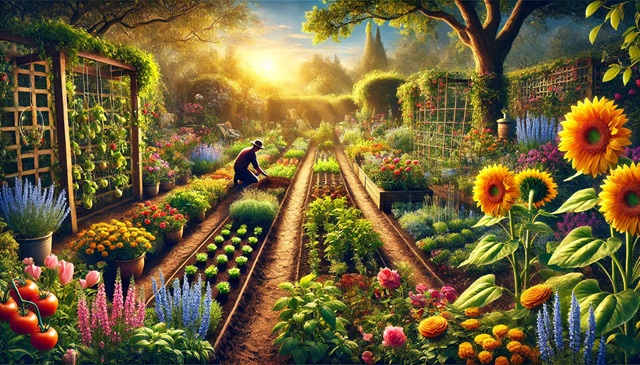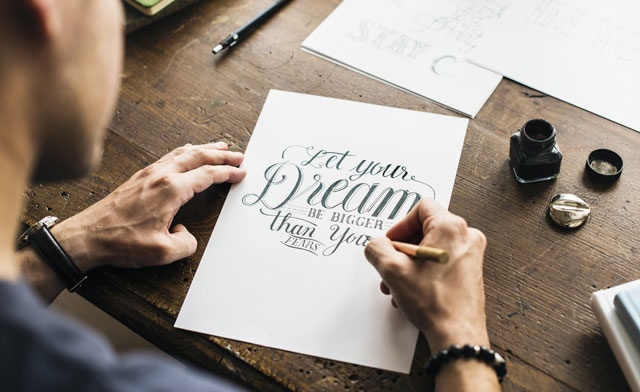Here's what this article will cover:
-
Solutions for decorating on a tight budget.
-
Working with small, large, or awkward spaces.
-
Overcoming anxiety with colors to include choosing interesting color schemes and infusing color in "no paint" rental rooms.
Approaching decorating dilemmas not as problems, but rather challenges that encourage thinking outside the box will help boost decorating confidence. By the end of this article you should be comfortable tackling any decorating issues.
TIGHT BUDGET SOLUTIONS
Tight monetary budgets account for most decorating obstacles. Most cost-saving techniques come in the form of savvy shopping and applying extra time towards doing a project yourself. It's well understood painting a room yourself will cost less than hiring someone to do it, just as a brand new dresser will likely cost more than a personally re-furbished thrift shop find.
There are two main concepts towards thrifty decorating:
1) A firm grasp on the final desired look.
2) Not being afraid to accomplish basic projects with proper instruction.
Having a firm grasp on the desired outcome stems mainly from inspiration. Browse around decorating stores for the ideal objects to complete a room's style, then either purchase reasonably priced objects within the budget, or figure out how to create them. Turning a traditional, old dresser into a sleek, modern nursery changing table can be as simple as a fresh coat of paint, new dresser knobs, a sturdy foam topper and maybe some molding screwed on top.
Keeping a handle on a decorating budget drives many people towards second hand stores, however the trips that end in disaster do so because no concept is kept in mind while browsing. Simply going and seeing what's in store isn't as effective as knowing to fulfill the style of a room a desk needs to be wooden, between 3 feet and 4 feet long with at least two drawers, and potentially have carved detailing, or offer the ability to attach detailing in the form of carved molding. Having an idea of the finished item in mind, and being aware of techniques to repurpose a piece of furniture towards that end goal will pay dividends in a decorating budget and timeline.
The second concept, not being afraid to accomplish basic projects, moves from aesthetic changes towards functionality attributes. Most people are comfortable screwing in new hardware on dressers, but many shy away from installing new faucets. With widely available instructional information, projects like switching cabinet doors, changing faucets, and even installing tiles are made simple. Many of these projects will be cheaper to complete as do-it-yourself jobs versus hiring a professional, but they will cost you in time.
Do extensive research from multiple credible sources and allow plenty of time to complete the projects. Many fixtures' building components follow a universal standard, making them easy to switch out, however older homes may require special parts. Understand what kind of components you're dealing with before beginning a do-it-yourself project. Finally, anything requiring in-depth electrical (more than installing a new light or ceiling fan) or plumbing knowledge might be better left to the professionals.
Now that you understand the two main concepts of frugal decorating, here are some tips to consider and inspire outside the box thinking:
- A fresh coat of paint on anything to include spray paint on vases and ceramic objects can immediately change the style of a room.
- New hardware on drawers is quick and effective.
- Nail on molding for anything that could use carved detailing.
- Apply gold leaf foil or contact paper to the backs of shelving or the front of drawers for a fun finishing touch.
- Install new fixtures to make a shower feel completely re-done. Consider even switching out the sink as most are standard sized.
- Try new fabric on furniture. If reupholstering is out of the question, use slip covers or new pillows for a sprucing.
- Switch out an old, generic ceiling light for a Zen-inspired paper lantern shade. Be sure to turn off the main electric circuit before beginning.
- Paint the floor a checkerboard or striped pattern, just be sure to use the correct paint for the flooring and complete the correct preparation steps.
- Hang curtains from the ceiling to cut a room in half, add drama around windows, or hide a desk nook.
- Use objects in a new way, such as hanging an old ladder horizontally to hold books or leaning it against the wall to hold blankets or towels.
- Get creative with photos on the wall: different arrangements, frames, and subjects to name a few.
These are just to get started. The key is to identify what will fit perfectly into a room, then determine if repurposing will help achieve that goal. Continue looking through inspiration, visiting do-it-youself informational websites, and speaking to professionals at home improvement stores to expand your skills and out of the box thinking.
SMALL, LARGE, & AWKWARD SPACES
Almost more frustrating than a limited budget are small, large, and awkward spaces. These special rooms either can't fit everything required for functionality or always seem slightly incomplete from a style stand-point. There are many ways to deal with these special spaces, with most falling into two categories:
1) Optical illusions
2) Physical adaptations
Creating optical illusions will make rooms feel bigger, smaller, or hide various imperfections. One of the cheapest optical illusion techniques is using color. Remember this: in most cases, dark colors shrink rooms. In some cases, strategically placed dark colors well balanced with lighter tones will have no effect on the size of a room. However, even a light painted room with dark flooring can appear small. It turns into a balancing act of optical illusion.
Here are some color optical illusions to consider:
- For a longer room, paint a far end wall a dark color. Keep the other walls light to bring the dark wall forward, making the room seem shorter. The same principle applies for large rooms, simply paint one wall a dark color and watch the room shrink down.
- A too-high ceiling comes down when painted dark. In some cases extending the dark color to the picture line (the top foot of the wall) will enclose the room further.
- To make a low ceiling appear loftier, paint it a light color. However, be careful of extending the light ceiling down to the picture line, as described in the previous trick, as the contrast with darker walls could highlight the room's enclosure.
- Vertical stripes heighten, horizontal stripes widen.
Painting a room can quickly and cheaply transform its style and size, it just needs to be done correctly. The second category of dealing with special rooms involves physical changes that boost functionality, aesthetics, and may work with a bit of optical illusion.
Here are tricks broken down by room category:
LARGE ROOMS
The goal for large rooms is to make use of the space and ensure nothing appears to be floating. Proportions are key so larger furniture, grand focal points, and area rugs may be needed to tie down room components.
Try some of these tricks:
- Hang window curtains from the ceiling to add drama and make windows take up more "space" in the large room.
- Divide large rooms physically with curtains hung from the ceiling, foldable screens, and sturdy book shelves.
- In a large living room designate sitting areas centered around different area rugs or focal points.
- Use area rugs, large photos, and even patterned wall paper to take up space in sparsely filled large rooms.
Remember, proportions in large rooms require special attention to ensure everything isn't swallowed up. Small rooms also need to be proportional, however the lack of space can significantly affect the room's functionality, making space the priority.
SMALL ROOMS
Small rooms require serious de-cluttering and usage of every inch. There are plenty of decorating tricks, but none are effective if there is too much stuff and not enough space. First rule of small rooms is clear out whatever is not needed then carefully select what stays and what finds a new room or the trash bin.
In addition to the painting techniques for the illusion of more space, try these tricks to make use of every nook and cranny in a small room:
- Foldable chairs are great for entertaining and can be hidden away in a closet, deep trunk, or behind thick curtains when not in use.
- Screw in floating shelves to hold books, knick knacks, and office supplies.
- Use mirrors for the illusion of a larger space.
- Change inward opening doors into sliding doors, outward opening, or even remove the doors. By diminishing a door's expansive space in a small room there will be a feeling of more space.
- Remove cabinets to open up a small kitchen- just a word of caution to keep plates and glasses tidy.
- Use trunks, storage ottomans, painted wooden crates, and oversized baskets as decorative storage solutions.
- Get creative with boxes that fit under couches and beds to hide clutter, and cover shelves with fabric adhered to stick-on velcro tape.
Storage is at the forefront in small rooms. Keeping clutter at bay will improve a room's functionality. Keep in mind smaller rooms tend to look messier quicker than larger rooms. Large rooms and small rooms have numerous clear-cut solutions, however not all rooms are easily dealt with, specifically those with awkward spaces.
AWKWARD SPACES
Awkward spaces are defined as spaces with distinguishing architectural features that make it difficult to fit normal furniture, and, from lacking functionality, tend to become messy storage areas or the "we're not quite done decorating here" spaces. Some examples are under stair nooks, attic bedrooms, and areas with haphazardly placed columns, beams, and pipes.
Embrace awkward spaces with creativity:
- Loosely hang fabric from a low ceiling to create a canopy feel.
- Turn a nook into shelving for books and games, or even a mini-bar.
- Create a fake wall with a screen, then really use the space for storage.
- Place climbing plants around a metal beam or column to soften.
Every awkward space is different, therefore needs special attention to decorate properly. Here are a few questions to analyze the awkward space:
1) What exactly is the awkwardness in terms of the surrounding room? For example: small nook, a beam that sticks out and draws attention, or tiny corner with a low ceiling.
2) If the space is withdrawn from a larger room, then what could the house use? For example, more storage for specific items, a child's play area, or a guest area.
3) If the space is part of a larger room, how can it be incorporated into the style? Will it boost functionality or contribute towards aesthetics?
4) Does the awkward space need to be covered up with paint, draped with fabric or completely enclosed? In doing so, will it blend into the background or become a new focal point?
By exploring various techniques for dealing with awkward sized rooms and creative solutions that work in multiple rooms, you'll be better equipped to decorate awkward spaces. Use the previous questions to stay organized when a space seems too daunting.
A COLORFUL WORLD
Color is one of the fundamentals in any design. Now we'll focus on the trepidation some people feel when choosing color combinations.
Bold color decisions, rather choosing to stay in neutral colors or common shades, are often what deviate great designs from forgettable ones. Choosing colors is more than preference; there is a science associated with color combinations that make certain compositions work better than others.
It works based off the 12-sliced color wheel where each slice is a color of the rainbow: red, red-orange, orange, light orange, yellow, and so forth. By paying particular attention to the arrangement of slices, one can choose interesting color combinations that are aesthetically pleasing. A few great choices, from safer to more unexpected, include:
- Monochromatic where various shades of the same color slice are utilized in a design. The ombre effect is a take on monochromatic.
- Analogous utilizes three neighboring slices, adding more color to the combination.
- Complementary and Double Complementary use the opposite slices and two slices (for Double), such as red and green, and red, red-orange, green, and teal. The reason these combinations work is the opposite color makes a color richer, similar to how salt in cooking brings out the other flavors.
- Complementary Variations work similar to regular Complementary, but utilize various tones of the colors.
- Triads and Tetrads take three and four, respectively, equidistant colors on the wheel. A common Triad is red, yellow, and blue. A Tetrad is orange, green, blue, and violet.
There are plenty more color combinations to decipher with a color wheel. The key is trying out supposedly clashing colors, they might just work well together. Once colors are chosen, apply them to a design by identifying usage: dominant, subordinate, and accent. The roles can be shared by multiple colors, for example if a Tetrad color scheme is used, or less, as the case with a Complementary color scheme.
- The dominant color establishes the mood of the room and will likely be the wall coloring. On a bed, the dominant color will be the bed spread.
- The subordinate color supports the dominant color. On a bed, the subordinate color will be the pillows or throw blanket.
- The accent color is a final bit of polish. It would be the trim, an aptly called accent wall, and, on a bed, a fun throw pillow or the unexpected pillowcase trim.
As seen in the bed example a discussion on color isn't restricted to paint. Utilize paintings, fabrics, objects, and furniture to develop the color combinations. This practice becomes especially important if faced with a no paint zone.
*LEARN MORE Take your designing a step further by investing in a color wheel and even a color guide for inspiration.
NO PAINT ZONE
Some rental properties discourage painting and putting holes in the walls. Oftentimes if renters are allows to paint or drill holes, they need to repaint and fill-in holes before moving out. Read the lease agreement thoroughly and communicate with the landlord to understand all rules and regulations pertaining to the property. With that said, if the landlord is against all painting, ask him or her to consider neutral colors with the reasoning that a well chosen color could boost the look of the home.
If painting is allowed, but with the constraint of repainting before vacating, accept the additional work, or paint just a well-placed accent wall.
Absolutely no painting at all? No problem! Remember, think outside the box. Fill up wall space with framed photos, floating book shelves, large tapestries, and painted canvases. A blank white wall will serve the beautiful imagery and colors well.
Another constricting scenario is no painting and no holes in the wall. An easy fix is leaning large framed mirrors and paintings against the wall. Secure photos onto fabric covered cork screens, the fabric will infuse color and the photos will personalize the room.
Regardless of the rental agreement, most times switching out lighting fixtures and colorful curtains offer easy ways to infuse color and bright light into a rental room. Just be sure to change back to the old fixtures and curtains before moving out.
Finally, just because a home is a rental doesn't mean the furniture needs to resemble hand-me-downs. Invest in a beautiful piece that really ties a room together. The attention will be on the room's furniture and objects rather than it's constricted walls.
SUMMARY
This article addressed common decorating problems and creative solutions. There are no excuses for decorating on a budget, in fact less money means more creative projects to fill a room. Working with large, small, and awkward spaces can be solved with optical illusions and physical adaptations to the space. Finally, choosing color combinations isn't difficult with a color wheel and basic knowledge of utilizing equidistantly spaced color slices. Infusing those color schemes aren't restricted to painted walls, a great fact for no paint rentals.
Remember, approaching decorating dilemmas not as problems, but rather challenges that encourage thinking outside the box will boost decorating confidence. First up, a classic Greco-Roman style.





























